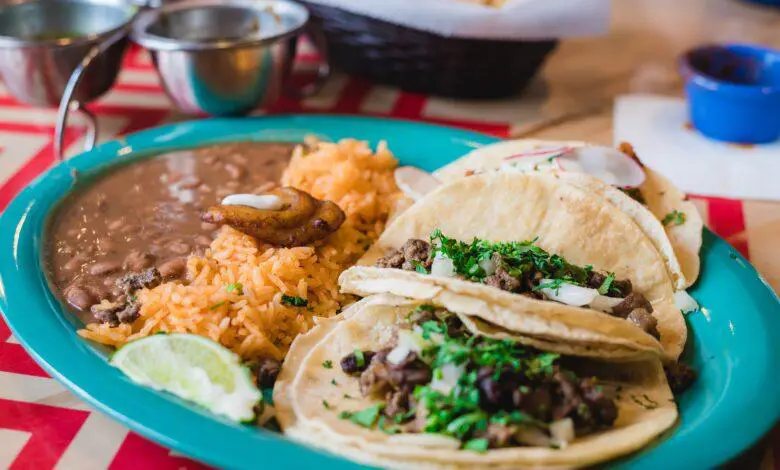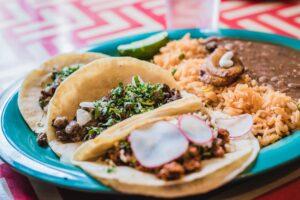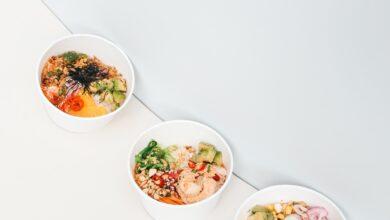Culinary Adventures in Mexico City: Tacos, Tamales, and More 🌮🫔🍽️
Exploring the Rich Flavors and Street Food Delights of Mexico's Capital 🇲🇽🌯

Introduction
Mexico City, a bustling metropolis with a rich cultural heritage, is a paradise for food enthusiasts. The city’s culinary scene is a vibrant tapestry of flavors and traditions, where street food vendors and Michelin-starred restaurants coexist harmoniously. In this article, we invite you to embark on “Culinary Adventures in Mexico City: Tacos, Tamales, and More – Michelin-Starred Restaurants – Must-Try Mexico City Treats.”
Mexican cuisine is an artful blend of indigenous ingredients, European influences, and culinary creativity that has been perfected over centuries. In Mexico City, you can experience this culinary magic in its purest form, whether you’re dining at a world-renowned restaurant or savoring street food on a bustling corner.
Join us on a culinary expedition that dives deep into the essence of Mexico City’s gastronomy, featuring Michelin-starred restaurants such as Pujol, Quintonil, and Maximo Bistrot. These establishments represent the pinnacle of Mexican cuisine, where tradition and innovation come together to create unforgettable dishes.
And let’s not forget the vibrant street food scene. We’ll also explore the iconic dishes like tacos and tamales that are the heart and soul of Mexican street food. Get ready to tantalize your taste buds and immerse yourself in the rich and diverse world of Mexican culinary delights.
Mexico City’s Culinary Diversity
A brief overview of the rich and diverse Mexican cuisine
Mexican cuisine is renowned worldwide for its rich and diverse flavors, making it a true culinary treasure. This culinary tradition is deeply rooted in the country’s history, dating back to pre-Columbian times. One of the most iconic elements of Mexican cuisine is the use of ingredients such as corn, beans, chili peppers, and chocolate, which were cultivated and enjoyed by the ancient Mesoamerican civilizations.
The Mexican culinary palette is a harmonious blend of indigenous ingredients and European influences brought by the Spanish during colonization. These influences are most evident in the extensive use of meats, dairy products, and bread. This fusion created a unique culinary identity that has evolved and expanded over the centuries.
Mexican cuisine offers a wide range of regional specialties, each boasting its own distinct flavors and ingredients. For example, the coastal areas celebrate seafood, while central regions are known for their hearty stews and moles. In the north, beef and wheat-based dishes dominate, reflecting the influence of Mexican cowboys, or “vaqueros.”

The cultural significance of food in Mexican culture
Food holds profound cultural significance in Mexican society. It is a cornerstone of family gatherings, celebrations, and daily life. The act of preparing and sharing meals is deeply embedded in Mexican culture and is a powerful symbol of unity and hospitality. Mexican families often come together to cook traditional dishes, passing down recipes through generations.
Mexican cuisine is closely linked to various festivals and traditions. For instance, Day of the Dead, a beloved Mexican holiday, features altars adorned with traditional foods like sugar skulls and pan de muerto, a special bread. During Independence Day, people savor chiles en nogada, a dish with the colors of the Mexican flag.
Moreover, the vibrant street food culture in Mexico City exemplifies the importance of food in everyday life. From taco stands to tamale vendors, the city’s streets are alive with the enticing aromas of freshly cooked dishes. This street food tradition showcases the deep-rooted connection between Mexican culture and its culinary heritage.
The balance of tradition and innovation in Mexico City’s dining scene
Mexico City’s dining scene offers a tantalizing blend of tradition and innovation. While traditional Mexican dishes like tacos, tamales, and mole remain popular staples, the city’s restaurants also push the boundaries of culinary creativity. Chefs draw inspiration from both local ingredients and international trends to craft innovative dishes that surprise and delight diners.
A notable trend in Mexico City is the revival of ancient culinary techniques and ingredients. Chefs are increasingly exploring indigenous foods like huitlacoche (corn fungus), chapulines (grasshoppers), and different types of heirloom corn to create innovative, yet authentically Mexican, dishes. This culinary renaissance not only honors tradition but also adds a contemporary twist to classic recipes.
Mexico City’s dining establishments offer diverse experiences, from street food vendors to upscale restaurants. This variety allows locals and visitors to savor the full spectrum of Mexican cuisine, from the familiar to the experimental, making the city a hub for culinary exploration.
Pujol – A Mexican Culinary Icon
Introduction to Pujol and Chef Enrique Olvera
Pujol, located in the heart of Mexico City, is not just a restaurant; it’s a culinary institution that has redefined Mexican cuisine. At the helm of this iconic establishment is Chef Enrique Olvera, a pioneer in the world of contemporary Mexican gastronomy. His culinary journey began in New York City, where he honed his skills at prominent restaurants before returning to his native Mexico to open Pujol. Since its inception, Pujol has been on the cutting edge of reimagining traditional Mexican flavors, earning international acclaim and a coveted Michelin star.
The reinterpretation of traditional Mexican dishes
What sets Pujol apart is its remarkable ability to reinterpret and elevate traditional Mexican dishes. Chef Olvera’s approach is deeply rooted in a profound respect for the country’s culinary heritage while embracing modern techniques and flavors. Pujol’s menu reflects the fusion of tradition and innovation, resulting in dishes that surprise and delight diners.
One standout example of this reinterpretation is Pujol’s take on the classic mole. The Mole Madre, or “mother mole,” is a dish that has been aged for over 1,000 days, creating a depth of flavor that is truly exceptional. This dish pays homage to the time-honored traditions of mole-making in Mexico while pushing the boundaries of what mole can be.
Signature dishes that define Pujol’s Michelin-star status
Pujol’s Michelin-star status is well-deserved, and its signature dishes exemplify the culinary artistry that has earned it international recognition. The Mole Madre is just one example of the restaurant’s iconic offerings. Another must-try is the Taco Omakase, a tasting menu of tacos that showcases a diverse range of Mexican ingredients and flavors. This tasting experience allows diners to explore the regional diversity of Mexican cuisine, all within the confines of a single dish.
Pujol’s Tlayuda is another standout creation, featuring a crispy tortilla base topped with a delicate layer of hoja santa (sacred leaf) and rich Oaxacan cheese. This dish is a contemporary twist on the traditional Oaxacan tlayuda, which is usually larger and thicker. Pujol’s version adds an element of finesse and refinement to this street food classic.
Quintonil – Celebrating Local Ingredients
Exploring Quintonil’s commitment to local and sustainable ingredients
Nestled in the vibrant culinary landscape of Mexico City, Quintonil stands as a testament to the beauty of celebrating local and sustainable ingredients. This Michelin-starred restaurant has made a name for itself not only for its exquisite cuisine but also for its unwavering dedication to sourcing ingredients from nearby regions. Chef Jorge Vallejo, a renowned figure in the world of Mexican gastronomy, has made it his mission to support local farmers and producers, fostering sustainability and preserving the flavors of Mexico.
Quintonil’s commitment to local ingredients goes beyond just being a trend; it’s a fundamental philosophy. The restaurant’s team collaborates closely with small-scale farmers, foragers, and artisanal producers to showcase the diverse bounty of Mexican terroir. This approach not only promotes the use of indigenous crops but also helps protect the environment by reducing the carbon footprint associated with food transportation.
The innovative use of traditional Mexican flavors
Quintonil’s innovative spirit is evident in its ingenious use of traditional Mexican flavors. Chef Jorge Vallejo draws inspiration from the rich tapestry of Mexican cuisine, taking classic dishes and reimagining them in exciting and unexpected ways. The result is a menu that invites diners on a journey through Mexico’s culinary history while offering fresh and contemporary interpretations.
One striking example of this innovation is the restaurant’s use of pre-Hispanic ingredients. Quintonil incorporates ancient grains like amaranth and chia seeds, creating modern dishes that pay homage to the food of Mexico’s indigenous peoples. These ingredients add both nutrition and a unique flavor profile to the dishes, all while preserving cultural heritage.
Must-try dishes that reflect Quintonil’s Michelin-starred excellence
A visit to Quintonil promises an unforgettable dining experience, and there are several must-try dishes that reflect the restaurant’s Michelin-starred excellence. One such dish is the “Caldo de Piedra,” a traditional Oaxacan soup that is prepared using hot river stones. Quintonil’s version elevates this age-old recipe, infusing it with a remarkable depth of flavor and a modern presentation.
Another standout dish is the “Chaya Tamal,” a tribute to the Yucatan Peninsula. This tamal incorporates the indigenous chaya leaf, creating a vibrant green color and a distinctive flavor. Served with a succulent sauce and fresh cheese, it exemplifies the balance of tradition and innovation that defines Quintonil.
Maximo Bistrot – A French-Mexican Fusion
An introduction to Maximo Bistrot and Chef Eduardo García
Nestled in the heart of Mexico City, Maximo Bistrot is a culinary gem that seamlessly marries French culinary finesse with the vibrancy of Mexican ingredients. Chef Eduardo García, a culinary virtuoso known for his innovative approach, helms this Michelin-starred establishment. Born and raised in Mexico, García honed his skills in France before returning to his homeland to create a restaurant that encapsulates the best of both worlds – the elegance of French cuisine and the richness of Mexican flavors.
Maximo Bistrot’s journey to acclaim has been marked by its dedication to sourcing seasonal, locally-sourced ingredients. Chef García and his team take pride in forging close relationships with local farmers and artisans, ensuring a continuous supply of fresh, high-quality produce that underpins the restaurant’s exquisite offerings.
The harmony of French culinary techniques and Mexican ingredients
Maximo Bistrot shines in its ability to harmoniously blend French culinary techniques with Mexican ingredients. This fusion is a testament to Chef García’s artistic vision and passion for showcasing the diversity of Mexican produce. The result is a dining experience that combines the precision of French cooking with the bold, authentic flavors of Mexico.
One of the standout elements of Maximo Bistrot’s culinary approach is the use of French cooking methods to highlight the unique qualities of Mexican ingredients. For example, traditional Mexican dishes like chiles en nogada are elevated to new heights. At Maximo Bistrot, the dish features a delicate balance of roasted poblano chiles filled with a mix of meats, fruits, and spices, all expertly executed using French culinary finesse.
Unique dishes that encapsulate Maximo Bistrot’s Michelin-starred charm
Maximo Bistrot boasts a menu filled with unique dishes that embody its Michelin-starred charm. The “Duck Magret” is a remarkable creation that showcases the fusion of French and Mexican influences. This dish combines perfectly seared duck breast with a rich mole sauce, presenting an exquisite blend of textures and flavors.
Another must-try is the “Huachinango a la Talla,” a dish that celebrates Mexican coastal cuisine. The red snapper is bathed in a flavorful “alla talla” sauce, traditionally used for grilling seafood. The result is a tantalizing blend of smokiness and heat that transports diners to the shores of Mexico.
Street Food Delights – Tacos, Tamales, and More
A journey through the bustling street food scene of Mexico City
Embarking on a culinary adventure through the bustling streets of Mexico City is an experience like no other. The city’s street food scene is a lively and vibrant tapestry of flavors, aromas, and traditions that reflects the heart and soul of Mexican culture. From the moment you step onto the cobblestone streets, you’ll find yourself on a journey of gastronomic discovery.
As you weave through the colorful streets, you’ll encounter countless street vendors passionately preparing a wide array of dishes that range from tantalizing tacos to heartwarming tamales. Each food stall tells a unique story, often passed down through generations, making the street food scene in Mexico City a living testament to the country’s rich culinary heritage.
The iconic dishes and vibrant flavors of Mexican street food
Mexican street food is renowned for its iconic dishes and vibrant flavors. Tacos, for instance, are an undisputed star of the scene. Whether filled with succulent al pastor pork, tender barbacoa, or spicy chorizo, these handheld delights are a must-try. Topped with cilantro, onions, and a squeeze of lime, they burst with a symphony of tastes and textures.
Tamales, wrapped in fragrant corn husks, are another staple of Mexican street food. These pockets of masa (corn dough) are lovingly stuffed with various fillings, from savory to sweet. The combination of masa and flavorful fillings creates a delightful contrast that has been enjoyed for generations.
The sopes, huaraches, and quesadillas you’ll find at street food stalls are equally enchanting. These dishes feature thick corn tortillas piled high with an assortment of toppings, including meats, cheese, and salsa. Each bite offers an explosion of flavors and textures that will leave your taste buds dancing.
Where to find the best street food experiences in the city
While you can find delectable street food throughout Mexico City, certain areas are renowned for their exceptional offerings. Here are a few hotspots to explore:
- La Merced Market: This massive market is a treasure trove of street food vendors. Try the famous carnitas (slow-cooked pork) or indulge in churros with hot chocolate.
- Coyoacán: Known for its traditional Mexican cuisine, Coyoacán offers a range of street food options, including tamales, elotes (grilled corn), and quesadillas.
- Condesa and Roma: These trendy neighborhoods are home to gourmet street food stands offering innovative twists on classic dishes. Be sure to try gourmet tacos and artisanal ice creams.
- Tepito: While Tepito may have a rough reputation, it’s a hidden gem for street food. Try the diverse selection of antojitos (street snacks) and traditional dishes.
- Mercado de Jamaica: This bustling flower market also features a vibrant food section where you can savor a variety of Mexican street food favorites.
Conclusion
As our culinary adventure through the heart of Mexico City comes to a close, we are left with an overwhelming appreciation for the rich flavors, traditions, and innovations that define this city’s culinary scene.
From the elevated artistry of Pujol and Quintonil to the harmonious fusion at Maximo Bistrot and the bustling street food experiences, Mexico City offers a delightful spectrum of flavors and culinary traditions. Each bite is a journey into the heart of Mexico, where history and innovation combine to create extraordinary food experiences.
We encourage you, dear reader, to explore Mexico City’s gastronomic treasures on your next visit. Savor the delights, embrace the culture, and allow your senses to guide you through the vibrant and diverse world of Mexican cuisine. The essence of Mexico isn’t just about food; it’s about the warmth, hospitality, and rich tapestry of traditions that make each dish a work of art. As you leave Mexico City, may you take with you the memories of a journey filled with unforgettable culinary adventures. ¡Buen provecho! (Bon appétit!)
UPCOMING ARTICLE
A Gastronomic Journey through Istanbul: Turkish Delights 🍽️🇹🇷



Facebook Comments